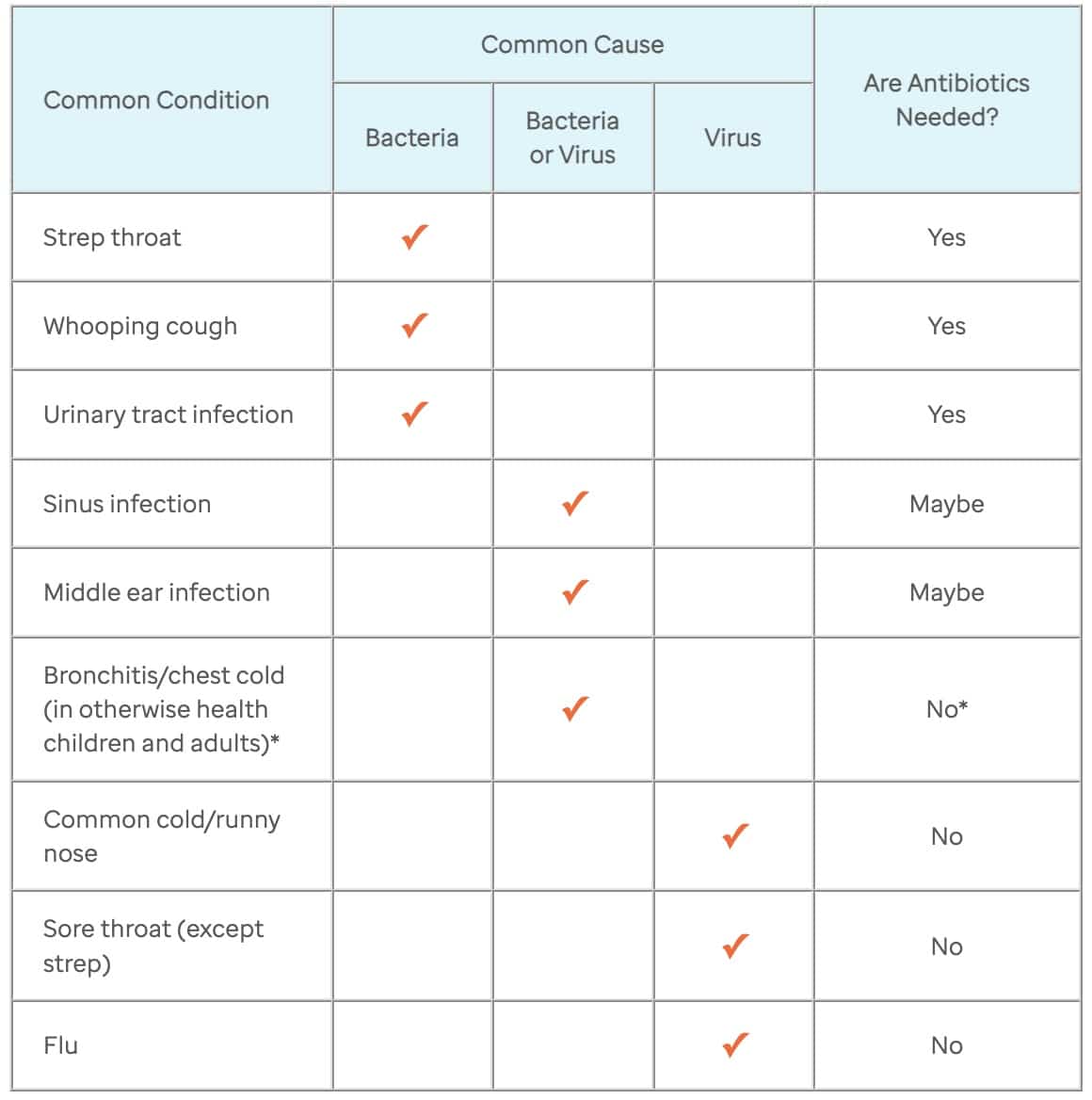Antibiotic Awareness
In support of the U.S. Antibiotic Awareness, a nationwide campaign that aims to fight antibiotic resistance and educate the appropriate use of antibiotics, we help guide our patients in protecting themselves from the harms of excessive antibiotic usage. Here’s what you need to be aware of.

What are Antibiotics?
Antibiotics treat certain types of bacterial infection by killing bacteria or preventing them from reproducing or spreading.
Antibiotics save lives. But as many as 47 million of the prescriptions given out each year are unnecessary, exposing people to avoidable side effects and a dangerous and growing issue – antibiotic resistance.
What is Antibiotic Resistance?
This is when a strain of bacteria no longer responds to treatment with one or more types of antibiotics. The overuse of antibiotics in recent years means they are becoming less effective and has led to the emergence of “superbugs”— strains of bacteria that have developed resistance to many different types of antibiotics. These types of infections can be serious and challenging to treat, which is why the Center for Disease Control (CDC) and health organizations globally are trying to improve usage through education.
When Should Antibiotics Be Used?
Antibiotics are meant to treat bacterial infections that:
- are unlikely to clear up quickly or at all without treatment
- could infect others unless treated
- carry a risk of more serious complications
Antibiotics may also be given to people at high risk of infection, but should NOT be taken to treat viral infections. This guide from the CDC can help you understand when antibiotics should be given, or avoided:
Antibiotics are only needed for treating certain infections caused by bacteria. Viral illnesses cannot be treated with antibiotics. When an antibiotic is not prescribed, ask your healthcare professional for tips on how to relieve symptoms and feel better.
* Studies show that in otherwise healthy children and adults, antibiotics for bronchitis won’t help you feel better.

How Should Antibiotics Be Taken?
Antibiotics may be administered in a few forms:
- Oral antibiotics: tablets, capsules or liquid which are used to treat mild to moderate infections.
- Topical antibiotics: creams, lotions, sprays or drops which are often used to treat skin infections.
- Injections: administered directly into the blood or muscle, these are usually reserved for more serious infections.
It’s important that antibiotics are taken exactly as directed by the prescriber. The way antibiotics are scheduled helps prevent the progression of antibiotic resistance.
Considerations and Interactions
- Only the person prescribed should take antibiotics. You should never “borrow” antibiotics from a friend or family member or use antibiotics that are not specifically prescribed to you.
- Some antibiotics aren’t suitable for people with certain medical conditions, or women who are pregnant or breastfeeding.
- Some antibiotics can also react unpredictably with other medications such as birth control and alcohol.
- It’s important to read the information that comes with your medication carefully and discuss any concerns with your provider.
Common Side Effects
- Rash
- Dizziness
- Nausea
- Yeast infections
- Diarrhea
If you experience persisting side effects, contact your healthcare provider.
To learn more about proper antibiotic prescribing and use, visit www.cdc.gov/antibiotic-use.
